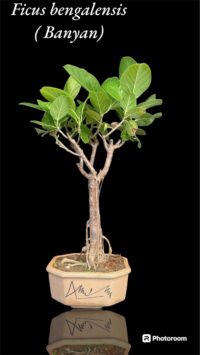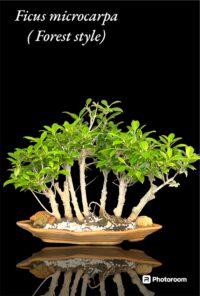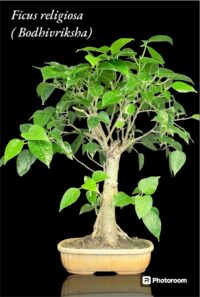Real BONSAI Tree - The Authentic Bonsai
Real Bonsai Tree –Unveiling the Mysteries
Introduction
Welcome to our comprehensive guide on real bonsai tree! In this article, we aim to provide you with in-depth knowledge and insights into the fascinating world of the Real bonsai tree. As experts in the field, we will uncover the true essence of real bonsai tree, their origin, cultivation techniques, and the art of nurturing these miniature wonders.
After going through the article, you can identify what a real bonsai tree is. The main aim of this article is to enable you to Buy and gift a Real Bonsai tree and don’t fall into marketing gimmicks of social media platforms.
What is a Real Bonsai Tree?
Bonsai, originating from Japan, is the art of growing and nurturing miniature trees in containers. The term “bonsai” itself means “planted in a container” and represents the harmony between nature and human creativity. Real bonsai trees are living works of art that require careful attention, skilful pruning, and patience to cultivate. They are not Grafted or genetically modified. The real shape and topography come with the skilful art of Bonsai masters.
The Origin of Real Bonsai Trees
Real bonsai trees trace their roots back to ancient Japan, where miniature landscapes and trees were created to replicate nature on a small scale. The art form eventually made its way to India and China, gaining popularity and becoming the distinct style we recognize today. Real bonsai trees embody the Zen philosophy of balance, simplicity, and harmony with nature.
Cultivating Real Bonsai Trees
Choosing the Right Tree Species
When it comes to cultivating real bonsai trees, the choice of tree species is crucial. Different species have unique characteristics and requirements. Some popular species include the Banyan, Pilkhan, Bodhi, Ficus, Neem, jamun etc. Each tree has its distinct charm, and selecting a species that suits your environment and personal preferences is essential.
Proper Pot Selection
Selecting the right pot for your real bonsai tree is an aesthetic consideration and plays a crucial role in its growth. The pot should provide adequate drainage, be proportionate to the size of the tree, and complement its style. Traditional bonsai pots are often made of ceramic or clay, adding an authentic touch to the overall presentation. How to make bonsai soil at home (2023) and Pot Selection..
Pruning and Training Techniques
One of the fundamental aspects of bonsai cultivation is pruning and training the tree to maintain its miniature size and desired shape. Pruning involves selectively removing branches and foliage to maintain balance and proportion. Training techniques such as wiring and shaping are employed to guide the growth and create artistic forms that mimic the natural beauty of full-sized trees. How to Care your Banyan Bonsai Tree
Nurturing and Care
Real bonsai trees require diligent care to thrive. This includes providing the appropriate amount of sunlight, water, and nutrients. Monitoring the moisture level of the soil and adjusting watering accordingly is crucial. Additionally, regular fertilization and protection from extreme weather conditions are necessary to ensure the health and longevity of your bonsai tree.
The Artistic Beauty of Real Bonsai Trees
Real bonsai trees are not merely plants in a pot but artistic masterpieces that captivate the viewer’s attention. The careful cultivation and meticulous attention to detail that goes into shaping and maintaining a bonsai tree is truly an art form. Each tree tells a unique story, reflecting the vision and dedication of its caretaker. Beauty of Real Bonsai
Benefits of Real Bonsai Trees
Apart from their visual appeal, real bonsai trees offer a range of benefits to enthusiasts. These benefits include:
Stress Relief and Meditation
The practice of bonsai cultivation provides a therapeutic and meditative experience. Working with bonsai trees helps reduce stress, promote relaxation, and enhance mindfulness. The focused attention required during pruning and training allows individuals to immerse themselves in the present moment and find solace in the beauty of nature.
Connection with Nature
Real bonsai trees enable individuals to establish a deep connection with nature, even in urban environments. Bringing a piece of the natural world into your living space not only enhances the aesthetic appeal but also instils a sense of tranquillity and harmony. Bonsai cultivation allows you to appreciate the beauty of trees and experience the wonder of nature up close.
Cultivating Patience and Discipline
Growing real bonsai trees requires patience, discipline, and a long-term perspective. As you care for and nurture your bonsai tree, you develop these qualities, which can positively impact other areas of your life as well. The process of shaping and training the tree teaches you the value of perseverance and the rewards that come with dedicated effort.
Conversation Starter and Artistic Expression
Real bonsai trees make for excellent conversation starters and unique artistic expressions. Displaying a beautifully crafted bonsai in your home or office sparks curiosity and invites a dialogue about the art form and its cultural significance. Bonsai enthusiasts often participate in exhibitions and competitions, showcasing their skills and creativity.
The Difference Between Real Bonsai Trees and Artificial Ones
While artificial bonsai trees may seem like a convenient alternative, they lack real bonsai trees’ authentic charm and living essence. They are often Cheap Imports and may be Grafted and genetically modified to commercially produce so-called bonsai. Generally speaking, you cannot have too much variety of these bonsai. Mostly they are Ficus Ginsing, Ficus Microcarpa, Chinese elm and Carmona.

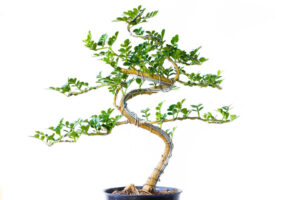
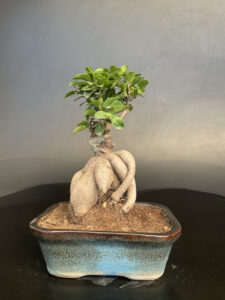
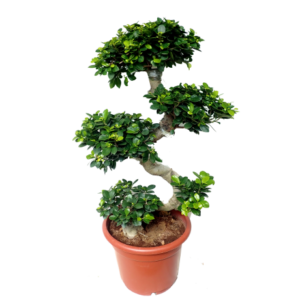
Above are examples of Cheap imported so-called bonsai trees.
Whereas the Real bonsai trees embody the harmony between humans and nature and carry a sense of history, tradition, and artistic expression. Their living nature provides a continuous connection to the natural world and allows for the growth and evolution of the tree over time.
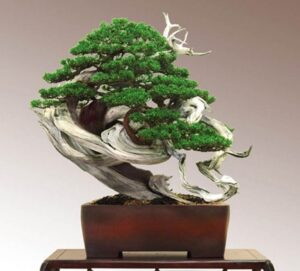
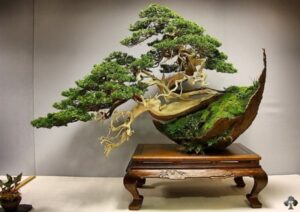

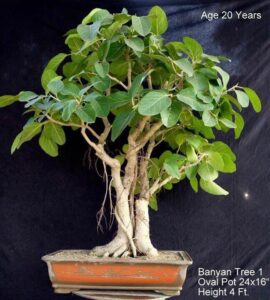
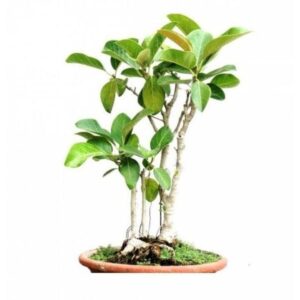

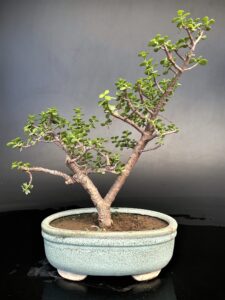
The Real Bonsai Tree by Delhi Bonsai
Conclusion
Real bonsai trees are captivating living artworks that offer a profound connection with nature and a glimpse into the ancient art of bonsai cultivation. Through careful selection, cultivation, and artistic expression, enthusiasts can create miniature landscapes that reflect their creativity, patience, and appreciation for the beauty of the natural world.
So, whether you are a seasoned bonsai enthusiast or just beginning to explore the art form, immerse yourself in the captivating world of real bonsai trees and experience the joy and tranquillity they bring.
Real Bonsai Tree
Buy Real Bonsai Tree Online and get it delivered in 3 Hours in Delhi NCR
Our Motto
What you see is what you get
Delivery
Personalised delivery at door step
Mission
Creating green spaces
Real Bonsai Tree Price

Bonsai trees, with their intricate beauty and cultural significance, have become sought-after treasures for enthusiasts and collectors alike. The price of a real bonsai tree can vary significantly depending on various factors, including the tree’s species, age, size, quality, and overall aesthetic appeal. In this article, we will explore the factors that influence the price of real bonsai trees and provide some insights into the pricing ranges you can expect to encounter in the market.
Factors Affecting Real Bonsai Tree Prices
Species and Rarity
The species of a bonsai tree plays a significant role in determining its price. Some tree species are more commonly available, making them more affordable, while others may be rare or harder to cultivate, resulting in a higher price tag. Additionally, certain species are more favored by collectors due to their unique characteristics, such as the majestic Juniper or the elegant Cherry Blossom bonsai.
Age and Maturity
The age and maturity of a bonsai tree contribute to its value. Older trees often carry a sense of history and are more challenging to cultivate, requiring years or even decades of meticulous care and shaping. The time and effort invested in nurturing a mature bonsai tree are reflected in its price, making older specimens more expensive compared to younger ones.
Size and Proportions
The size and proportions of a bonsai tree also influence its price. Large bonsai trees, known as “specimen” or “masterpiece” bonsai, command higher prices due to the time and skill required to shape and maintain their grandeur. Smaller bonsai trees, known as “shohin” or “mame” bonsai, may be more affordable and are a popular choice for beginners or those with limited space.
Aesthetic Appeal and Quality
The overall aesthetic appeal and quality of a bonsai tree play a vital role in determining its price. Factors such as the tree’s trunk thickness, branch structure, leaf density, and overall health contribute to its visual appeal. Bonsai trees with well-developed nebari (surface roots) and harmonious proportions are highly valued, as they exhibit the mastery of bonsai craftsmanship.
Artist’s Reputation
Bonsai trees created by renowned artists or bonsai masters often carry a premium price. These trees bear the stamp of their creator’s expertise, artistic vision, and years of experience. Collectors and enthusiasts are willing to pay a higher price for bonsai trees crafted by recognized artists due to the inherent value associated with their name and reputation.
Further read: Article

